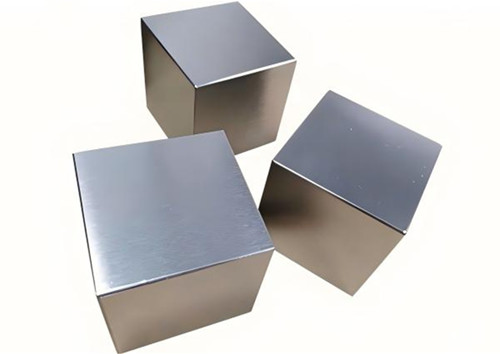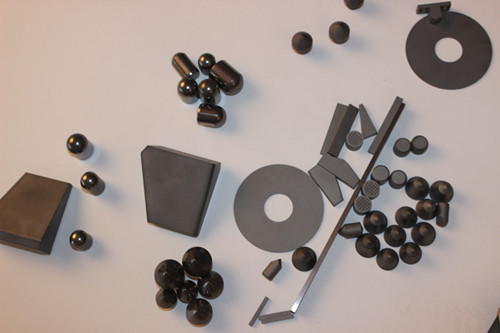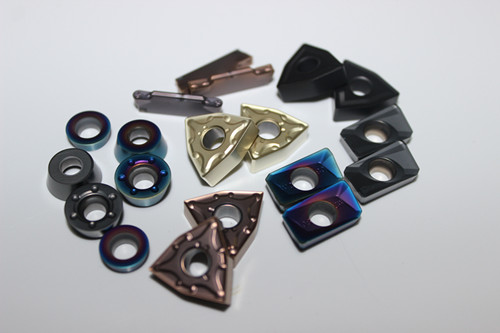Tungsten vs tungsten carbide and their properties and uses
Tungsten vs tungsten carbide are two important industrial raw materials that are widely used. This article will introduce the two materials in detail.
1.Definition of tungsten vs tungsten carbide:
Tungsten, tungsten is a metallic element located at the 74th position of the periodic table, and its atomic weight is 183.84. This metal is known for its steel gray or silvery white appearance, high hardness and high melting point. At room temperature, tungsten is not corroded by air and shows good stability. China is the world’s largest tungsten reserve country, with reserves accounting for 46.8% of the world, nearly half, followed by Australia, Russia and Canada. Tungsten, a rare metal, occupies an important position in national strategic resources.

Tungsten carbide, with the chemical formula WC(wolfram carbide), is an inorganic compound composed of tungsten and carbon, and is also one of the hardest carbon-based compounds. Its molecular weight is 195.85, and it appears as a black hexagonal crystal with a metallic luster. The hardness of tungsten carbide is second only to diamond and boron nitride, and it is a good conductor of electricity and heat. It is insoluble in water, hydrochloric acid and sulfuric acid, but is easily soluble in a mixed acid of nitric acid and hydrofluoric acid.

2.Hardness of tungsten vs tungsten carbide:
| Tungsten/wolfram | Tungsten carbide | ||||
| Mohs hardness | Hardness(HV) | Hardness(HRA) | Mohs hardness | Hardness(HV) | Hardness(HRA) |
| 7.5 | 850-1100 | 66-71 | 8.5-9.5 | 1400-1800 | 90-94 |
3.Physical properties of tungsten vs tungsten carbide:
Tungsten/wolfram:
| Water Solubility: | Insoluble in water |
| Appearance: | Silvery white shiny metal |
| Density: | 19.35g/cm3 |
| Melting Point: | 3422℃ |
| Boiling Point: | 5927℃ |
| Poisson’s ratio: | 0.28 |
| Heat of fusion: | 35.3kJ/mol |
| Heat of vaporization: | 806.7kJ/mol |
| Specific heat capacity: | 24.27J·mol-1·K-1 |
| Thermal conductivity: | 173W·m−1·K−1 |
| Young’s modulus: | 411GPa |
| Shear modulus: | 161GPa |
| Bulk modulus: | 310GPa |
Tungsten carbide:
| Water Solubility | Insoluble in water |
| Appearance: | Black hexagonal crystal, with metallic luster |
| Density: | 15.63 g/cm³ |
| Melting Point: | 2870 ℃ |
| Boiling Point: | 6000℃ |
| Resistivity: | 19.2×10-6Ω·cm |
| Elastic Modulus(GPa): | 710GPa |
| Compressive Strength: | 56MP |
| CTE((10^-6/K)): | 6.9×10-6/K |
4.Tungsten and tungsten carbide applications:
Tungsten:
Tungsten has an ultra-high melting point of 3410℃ (the highest among metals), a dense structure of 19.3g/cm³ and excellent creep resistance, which enable it to show excellent performance in extreme environments: In the traditional industrial field, tungsten wire is still the core luminous material of high-end incandescent lamps due to its high melting point. A thin tungsten wire with a diameter of 0.015mm can withstand an operating temperature of 3000℃. In the electronics industry, high-purity tungsten sputtering targets are used for the deposition of metal interconnect layers of semiconductor chips, and the surface roughness is controlled within 0.5μm. In the field of high-tech, tungsten copper alloy (W80Cu20) is used as a vacuum contact material, and its arc ablation rate is 70% lower than that of traditional silver-based alloys. In the field of aerospace, rocket nozzle throat linings made of tungsten copper infiltrated materials can still maintain structural integrity under 3000℃ gas scouring. In terms of emerging applications, the International Thermonuclear Experimental Reactor (ITER) uses tungsten as the divertor armor material, and its heat load bearing capacity reaches 20MW/m². In the synchrotron radiation device, the tungsten collimator can accurately control the X-ray beam, and the aperture processing accuracy reaches ±5μm.
Tungsten carbide:
Tungsten carbide, as an important compound of tungsten, is a gray powdery substance prepared by the reaction of metallic tungsten and carbon at high temperature. Tungsten carbide has a hardness close to that of diamond, and has high wear resistance and refractory properties, making it the main manufacturing material for cemented carbide tools. Tungsten carbide is particularly widely used in engineering machinery, cutting tools, abrasives and jewelry industries. Cemented carbide cutting tools are often used to process tough materials such as carbon steel and stainless steel. Its temperature resistance and wear resistance can significantly improve the processing speed and tool life. In addition, tungsten carbide is also used to manufacture wear-resistant parts in mining tools and oil and gas drilling equipment. In the medical field, tungsten carbide is used to manufacture surgical instruments due to its excellent performance. In the jewelry industry, tungsten carbide has become a popular material for wedding jewelry due to its high hardness and high scratch resistance.
We are also a professional tungsten carbide products manufacturer with more than 40 years of manufacturing experience. If you need tungsten carbide products, such as tungsten carbide rods, tungsten carbide buttons, tungsten carbide plates and tungsten carbide sleeves, please click products to check the details.

5.Tungsten vs tungsten carbide price comparison:
Production cost and process: The production process of tungsten carbide is relatively complex, requiring higher technical requirements and production costs. This is mainly because tungsten carbide is made by reacting metallic tungsten with carbon at high temperature, a process that requires special equipment and processes. In contrast, although the extraction and processing process of tungsten also has certain technical difficulties, it is simpler and more direct than the production of tungsten carbide as a whole.
Performance and application: Tungsten carbide has extremely high hardness, wear resistance and corrosion resistance, which make it an ideal choice for manufacturing carbide tools, wear-resistant parts and high-temperature structural materials. Although tungsten also has good physical and chemical properties, such as high melting point, high density and good conductivity, its performance may not be as good as tungsten carbide in some specific applications.
Market demand and supply: Since tungsten carbide is widely used in cutting tools, mining equipment, oil drilling equipment and other fields, and these fields have high requirements for material properties, the market demand for tungsten carbide is relatively large. At the same time, due to the high production cost of tungsten carbide, its market supply is relatively limited, which further pushes up its price.
Price fluctuations: The prices of tungsten and tungsten carbide are affected by the global economic situation, relevant policies, and market supply and demand. However, due to the particularity of tungsten carbide production costs and market demand, its price fluctuations may be more severe.
6.Summary:
Tungsten and tungsten carbide are pivotal in industrial applications due to their unique physical and mechanical properties. With exceptional hardness and a high melting point, tungsten is critical for filaments, cemented carbides, and specialty steels. Meanwhile, tungsten carbide with diamond-like hardness and conductivity is ubiquitous in cutting tools, wear-resistant parts, and mining equipment.
From a pricing perspective, market values of both materials fluctuate with supply demand balances, mining costs, and technological advancements. Thus, investors and industry professionals must closely monitor market trends to optimize procurement and sales strategies.
Furthermore, as technological and industrial demands evolve, so do performance requirements for these materials. To meet these challenges, R&D institutions and manufacturers must innovate in processing technologies and material design while promoting sustainable resource management.
In conclusion, as indispensable industrial materials, tungsten and tungsten carbide will continue to expand their applications alongside technological progress and market growth.
